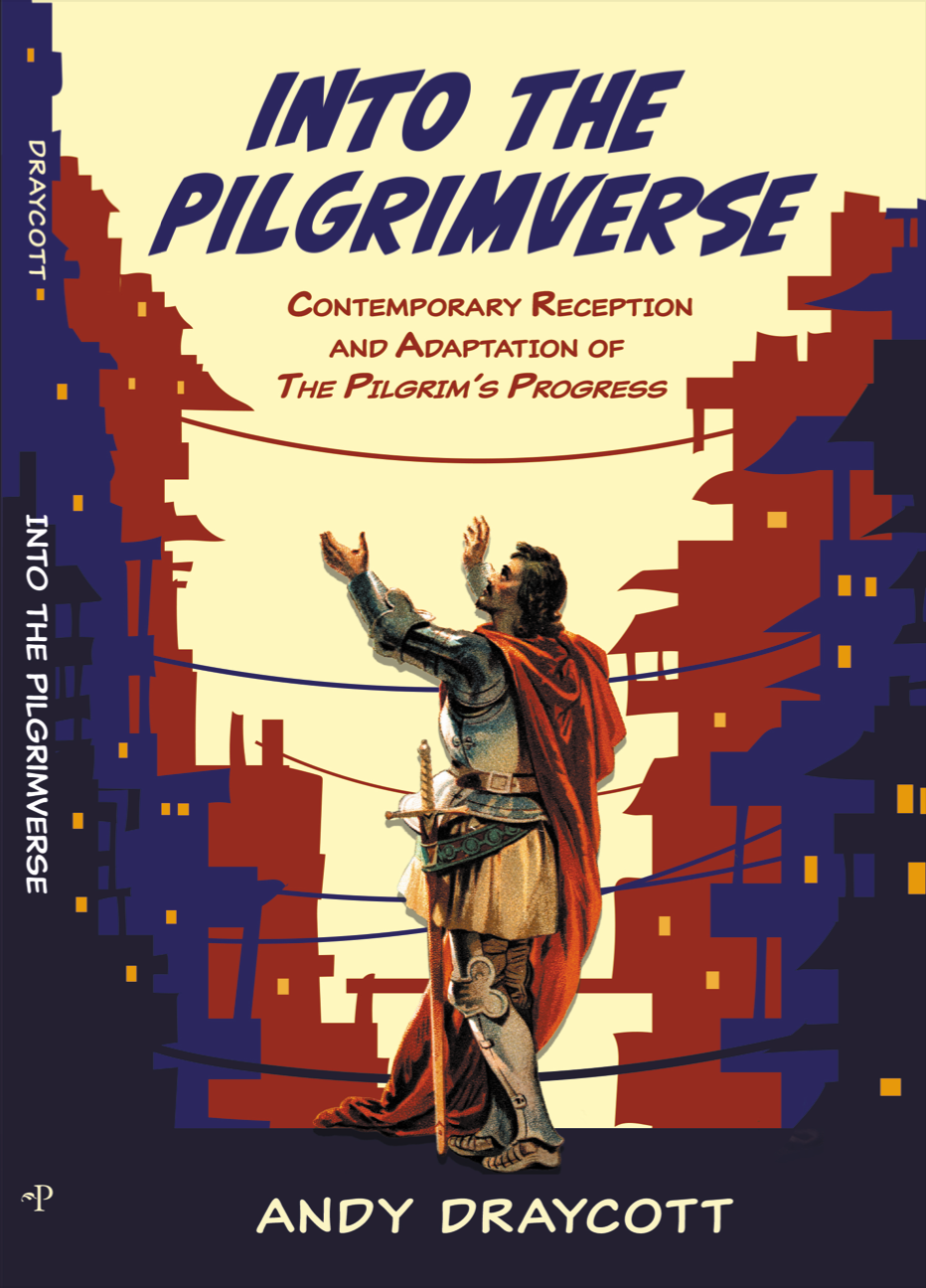Judging The Pilgrim's Progress by its Cover (2 of 2)
- andydraycott7
- Mar 25, 2024
- 3 min read
In my previous (1 of 2) post, I ended by reading a cover from an abridged version of The Pilgrim's Progress from Abeka Press who serve Christian schools and homeschool networks. That edition is part of a 12th grade Literature curriculum.

Abeka also host PP in a 'Simplified' edition for 3rd grade readers (8-9 yrs olds). The cover, below, instantly conjures up the adventure of battle, taken from the illustration inside the book of Christian's encounter with Apollyon. The adaptation's text does a good job of reducing the meeting between two without losing the dominant battle of words that Bunyan uses to raise the question of loyalty to opposing princes, and the temptations in view of Christian's previous failures that Apollyon aims at him. The image, of course, cannot convey the force of words, so instead, understandably for a visual medium shows the fiery darts flying at the armored Christian. This armor is the full medieval knight get up in excess of Bunyan's textual provision from the Palace Beautiful based on Ephesians 6. This, of course, demonstrates the visual conditioning of the imagination by the knight in shining armor motif that is drawn on here. All in all a different dominant image to advertize the book than that of the walking, burdened pilgrim.

An earlier cover of the third grade reader uses the image from the 12th grade text but reversed, and without the foregrounded burdened Pilgrim. It's not clear to me that this image is as appealing to a 3rd grade readership. A shiny city in the clouds and two men in white seems to expect too much visual literacy to entice prospective readers. Dare I say, it looks "worthy" but presumes the image will be understand and desired. But hanging out with those guys will not look that appealing to suburban kids, is my guess. But it may be that the religious aura of a required text within a Christian syllabus is primarily appealing more to the devotional sensibilities of parents rather than readers.
But of course, there could be many far more mundane reasons that lie behind the choice of any eventual cover. It is not contrary to elements of the narrative.

A still earlier version (as far as I can tell) is, for me, particularly interesting. The turrets of the towers either side of the huge city gate structure look fantastically appealing. Across the bridging overlook is the text "Knock and it shall be opened unto you." The reader will discover that this is what Bunyan puts above the Wicket Gate. And the reader will also have a clear and correct visual image of the wicket gate as a small pedestrian gate within a larger set of gates, through which burdened Christian is seeking admittance. Again, the image is static and overwhelmingly architectural which does not excite a reader's anticipation of narrative adventure. For some, this is a focus on THE key moment of the text, when Graceless becomes Christian as Goodwill pulls him through the gate. (Both Gate and Goodwill may be figures of Christ.) It is rare to see this image of the gate on a book cover, which makes its choice significant. The Scripture text and image together may again be speaking affirmatively to the sponsors of the child reader as to the theological bona fides of the famous story.

An even earlier cover shows how the latest design with the battling Christian (top, above) is a return, full circle, to this. Here, the scimitar-wielding knight is superimposed over, and indeed obscures, the Wicket gate design, but the Scripture verse is still discernible through the title's print. (Note, by the way, the serifs of the Title that communicate 'literary' and 'classic,' compared with the sans serif type for the Series titles, on each of these book covers.)
Elsewhere I've discussed the issue of how long Christian wears his armor (textually - not very long at all) and illustrators have a lot of influence on imagination of the pilgrimage as that of 'Christian soldier' or someone less military. Needless to say, nonetheless, that there is no time a Christian should be without the full armor of God from Ephesians 6.
Book covers make a difference to how a reader may approach a book, how they 'dress; visually the words they encounter, and even, dare I say it, how they come to love the book as object for, or alternatively, despite its appearance.
More on these lines could be said of illustrations within books generally, and even within this very series, but that's enough for now.


Comments